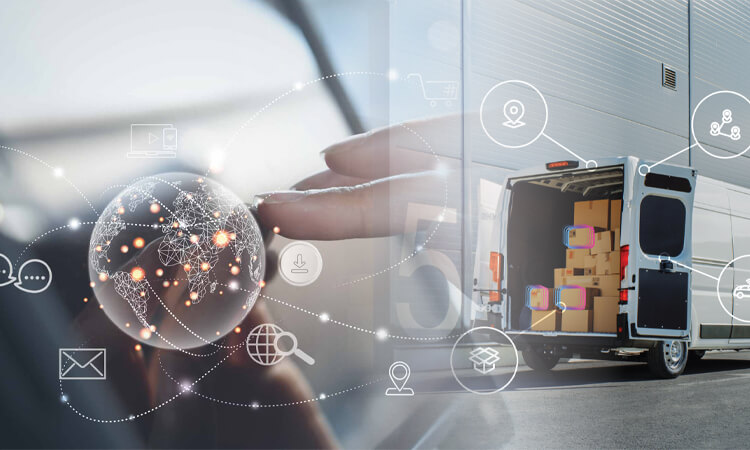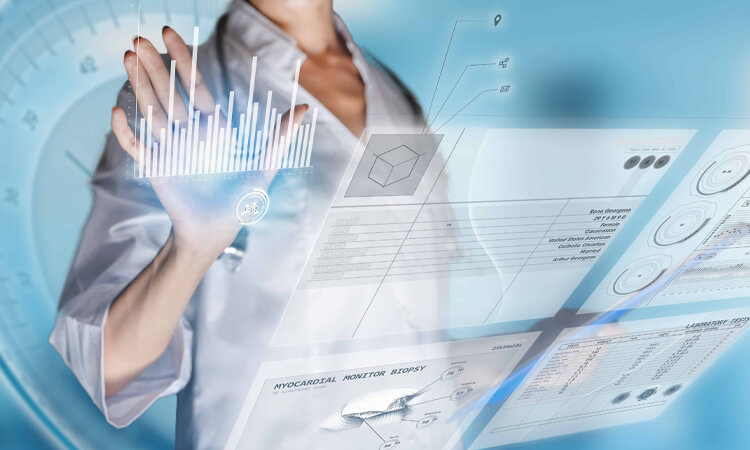IoT solutions can provide a wealth of benefits to businesses, from improved asset and resource visibility to reduced costs and enhanced operational efficiency. In this post, we’ll look at some of the most common IoT benefits and how they can help any business.
IoT Benefits: Real-time Asset/Resource Visibility

As IoT technology evolves, businesses can take advantage of real-time asset and resource visibility. This enables them to see what’s happening in their environment instead of waiting for monthly reports or quarterly audits. It also allows them to better plan for future growth by knowing how much resource is available and being used at any given time–or even wasted!
IoT solutions can help you monitor:
- The amount of water an irrigation system uses each day
- How much electricity do your lights use over time (and whether any bulbs need replacing)
- Whether there’s enough staff working on any given day
- Whether your trucks are running on time and where they’re going. How many people are in your store at any given time
IoT Benefits: Reduced Costs
One of the most visible benefits of an IoT solution is reduced costs. This can be achieved through several different mechanisms:
- Reduced need for human intervention
- Improved efficiency, which leads to lower operating costs and lower power consumption. For example, a self-driving car uses less fuel than a human driver; similarly, an automated manufacturing line will require less maintenance than one run by humans. These savings can be passed onto customers through cheaper products or services in both cases.
- Improved asset utilization (or “monetization”)–the extent to which assets are used productively rather than being idle or underutilized. It is another way businesses can save money through IoT solutions. For example, sensors installed on shipping containers will allow companies like Maersk Line (the world’s largest container shipping company) and Agility Logistics (one of Australia’s largest logistics providers) to track their cargo better as it travels across oceans. This allows them more precise information about where their shipments are at any given time and real-time updates on delays and other issues affecting delivery times. This is especially important considering that the global shipping industry reportedly loses billions of dollars annually due to inefficiencies and miscommunication between parties.
IoT Benefits: Improved Operational Efficiency
Every business wants to run as efficiently as possible and make sure they’re making the most out of their employees’ time and energy, but many don’t know how to achieve this goal. An IoT solution can help you achieve your operational goals by improving productivity, reducing costs, and improving quality control. For example:
- Suppose workers can use an app on their phones instead of walking over to a computer whenever they need information from the company databases or server logs. In that case, there will be fewer interruptions in the workflow which will lead directly to better performance overall (less wasted time).
- Suppose all employees have access via mobile devices. In that case, it becomes much easier for managers/supervisors, etcetera, to keep track of things such as who exactly needs what right now. So they don’t miss deadlines because someone forgot something important like paperwork before heading out on site somewhere else tomorrow morning.
The IoT solution can also provide data on how often employees have to walk back and forth between locations throughout the day. This will allow you to make better decisions regarding office layout and design, which is important for productivity and ensuring that everyone has easy access to everything they need.
IoT Benefits: Data-driven Insights for Quick Decision-making

Use Data to Make Decisions
Data is the lifeblood of your business. It can improve customer experience, product quality, operational efficiency, and business processes. Data also plays an important role in business strategy by providing insights into what customers want and how you can get ahead of your competitors.
Enhanced Customer Experience
With IoT solutions that collect real-time information on how customers interact with your brand or products, you can provide them with a better overall experience than ever before – whether they’re browsing online or visiting one of your stores in person! This means fewer complaints (and more repeat business) and happier staff members who feel valued by their employer (which translates into higher employee retention rates). It reduced costs associated with poor customer service experiences resulting in increased profits for shareholders because there’s less money spent on advertising campaigns promoting these positive experiences, which ultimately leads back again.
IoT solutions can help you enhanced customer experience in three main ways:
- Collect real-time data on how customers interact with your brand, products, and services.
- Use this data to provide them with an improved experience by making product recommendations based on their preferences and past purchases.
- Provide customers with the ability to rate products (or even leave feedback about their experiences), which you can use for future product development or marketing campaigns
- Leverage the data to identify trends and opportunities for improvement, which can lead to higher sales and improved customer retention rates.
- Use the data to enable employees to provide an enhanced customer experience by providing them with actionable insights based on your customer’s preferences and behaviors.
- Implement IoT solutions in manufacturing, logistics, and supply chain management for real-time monitoring of assets and materials and increased productivity (which translates into reduced costs).
IoT Benefits: End-to-end, Remote Monitoring and Management of Assets/Resources
The IoT can be used to monitor and manage assets and resources. This can be done remotely, in real-time, and from a central location by different people. The IoT can provide predictive and prescriptive insights that lead to quick decision-making, which helps businesses improve the end customer’s experience and enhance product quality and consistency.
The IoT can also be used to streamline and automate processes. This can be done by collecting data from sensors and other devices, analyzing it in real time, and taking action based on the insights. For example, a factory’s conveyor belt could automatically adjust itself based on the weight of items transported so that they move consistently.
The IoT can also be used to monitor and manage assets and resources. This can be done remotely, in real-time, and from a central location by different people. The IoT can provide predictive and prescriptive insights that lead to quick decision-making, which helps businesses improve the end customer’s experience and enhance product quality and consistency.
IoT Benefits: Real-time, Predictive, and Prescriptive Insights
In the past, you may have used a simple spreadsheet or database to store your data. But with an IoT solution, you can combine real-time information from your business operations with other data sets to make better decisions.
You might think all this sounds great, but how does it help? Well, here are some examples:
- Real-time – You’ll know what’s happening at any given moment in your company so you can take action immediately if needed. With predictive insights, you’ll also be able to prepare for future trends before they happen, which means less stress for everyone involved!
- Predictive – The technology behind these solutions allows them to predict what will happen next based on previous patterns or events that occurred within a certain timeframe (e.g., ten days ago). This helps us make better choices about inventory levels so we don’t run out unexpectedly!
- Prescriptive – A prescriptive solution uses historical data and current conditions, such as weather forecasts from nearby meteorological stations, before making recommendations about what should happen next based on those factors alone.
IoT Benefits: Improve End-customer Experience

Customer experience is a key metric for most businesses. Customers want to feel like they’re being treated well and are getting what they need from the business. While this may be a simple enough concept, it can be hard to execute, especially if you don’t have the right tools.
IoT can help companies improve their customer experience by providing more information about their customers’ needs and preferences, which makes it easier for companies to personalize products and services based on those needs. For example, if you have an IoT-enabled vending machine at your office or store location that offers coffee drinks as well as snacks like chips or candy bars (or even both!), then when someone orders something from the machine using his smartphone app while standing at least five feet away from where he wants his food order delivered.
It will know which snacks and drinks are available in inventory when the vending machine receives this order. It can offer suggestions based on what’s popular among other customers at that location. If they don’t have any chips or candy bars left, they can tell the customer that he might be interested in another type of snack instead.
IoT can also help companies improve their customer experience by providing more information about their customers’ needs and preferences, which makes it easier for companies to personalize products and services based on those needs.
IoT Benefits: Enhanced Product Quality and Consistency
The IoT can help ensure product quality, consistency, and compliance. Whether you’re producing a single product or multiple products in different locations, IoT solutions allow you to monitor production at every step.
By gathering data on every aspect of your business–from raw materials to finished goods, you can identify potential problems before they occur. For example:
- If there’s an issue with one batch of material being used for one product line but not another (say it contains high amounts of lead), then this will be flagged by the IoT solution as soon as it happens so that corrective action can be taken immediately without compromising safety standards or compliance regulations;
- Similarly, if there are issues with production lines themselves (such as worn parts or faulty equipment), these too will be detected by an integrated sensor network which will send alerts directly back into central monitoring systems;
These are just two examples among many others. Still, hopefully, they give you some idea about how powerful an IoT solution could be when implemented across entire supply chains – from raw materials to delivery!
IoT Benefits: Better Ability to Market, Upsell, and Cross-sell
Using IoT solutions, businesses can better market their products and services. By tracking customer behavior in real-time, businesses can identify potential customers and upsell or cross-sell them on related products or services. For example, suppose you’re currently using an IoT solution that tracks how long customers can check out at your store. In that case, this data can help identify which items are most likely to increase sales when added together with the originally purchased item.
A good example of this is Amazon’s Dash Wand: a small device that allows users to scan barcodes on items throughout their house, so they never run out again (and also saves them from clicking through multiple screens). When scanning an item like dish soap or trash bags, the wand uses Bluetooth technology to connect directly with Amazon Prime’s database–which contains information about what type of product they’re looking at–and automatically adds it to their cart before they even know what happened!
The IoT can also be used to help businesses understand how customers are using their products or services. By tracking the number of times customers use an item, companies can determine which features are most popular and which need improvement. This type of data has been used in many industries; for example, fitness trackers like Fitbit allow users to see how many steps they take each day, how much sleep they get at night, etc.
IoT technology is an exciting prospect for businesses. It offers a way to improve efficiency, cut costs and create new revenue streams. As we’ve seen in this article, there are many ways that IoT can help your business grow.









